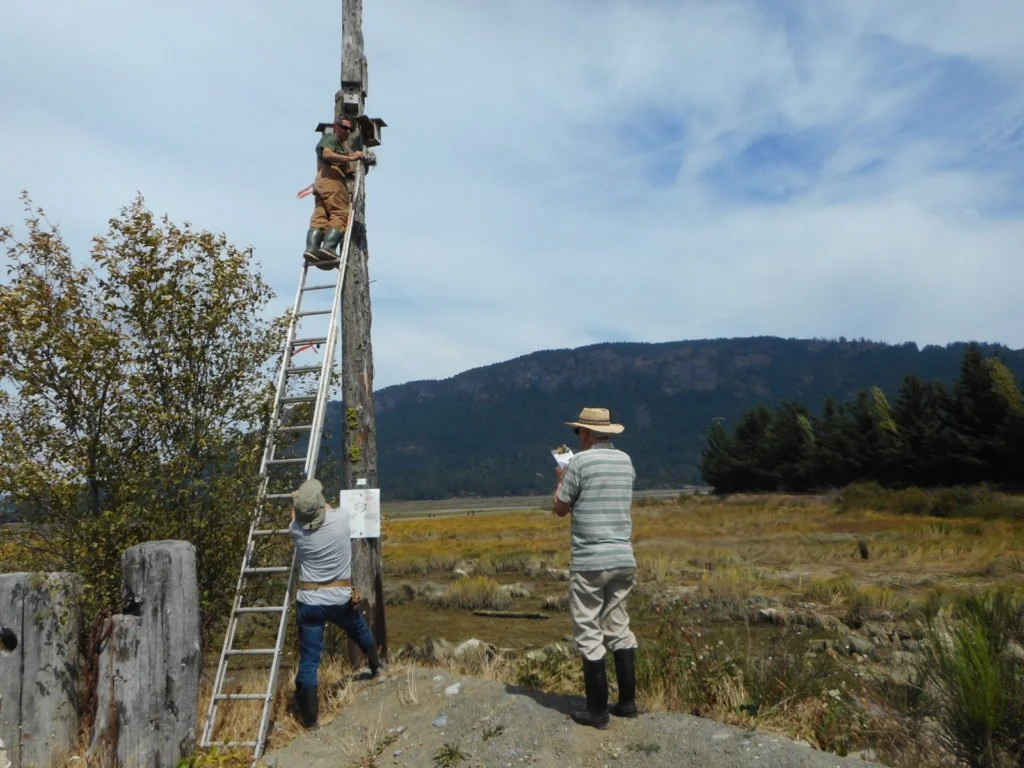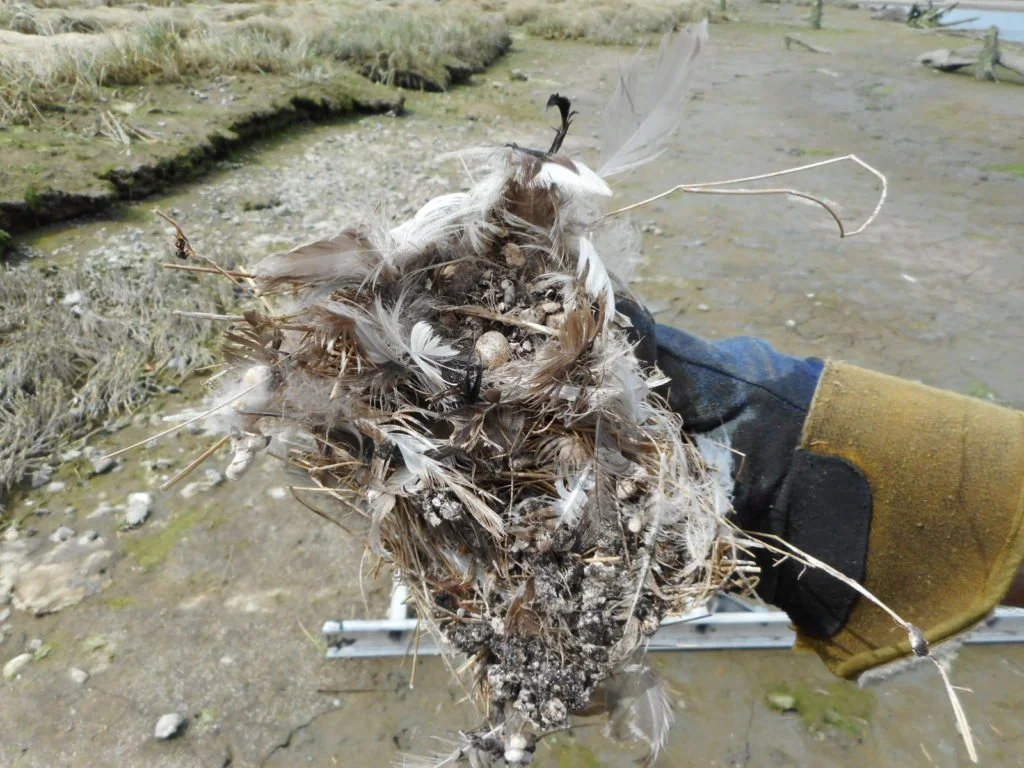Cowichan Estuary's Sensational Population Growth!
Don't worry, I am not talking about thehuman population, it is the tree swallows we are so excited about!
CERCA's "Cowichan Estuary TreeSwallow Enhancement Project" was initiated in 2016 by placing 45 nestboxes along the south fork of the Cowichan River, using the old pilings alongthe river's shoreline to attach the boxes. You may recall that the welldocumented decline of swallow populations world-wide and locally had triggeredthis initiative. The continuing disappearance of old trees formerly lining the estuaryand large scale habitat alienation within the Cowichan River floodplain may havebeen contributing to the noticeable disappearance of swallows from the estuary.CERCA's habitat enhancement program therefore started with providing nestingboxes in such a strategic location trying to eliminate at least one of thesuspected causes.
During the 2016 and 2017 nestingseasons the nest boxes were monitored twice weekly to learn more about swallowbehaviour and breeding success. Post-breeding clean-out of the boxes has beencarried out ever since by the end of August. Encouraged by the positive 2016 results(64% of boxes successfully occupied) more boxes were added in the followingyears. In 2017 nest occupancy increased to 90% followed by a slight declineto79% in 2018.
Subsequent to the clean-out in 2018 wereported on the unusual high number of dead fledglings and un-hatched eggsfound in the boxes, hypothesizing that an earlier than usual spring and anearlier than usual bird arrival, nesting, hatching, and rearing, going hand-in-handwith food shortages not having been developed in sync with the early phenologymay have been responsible for the unusual fledgling mortality. We therefore wereanxious to see the 2019 results. To our most pleasant surprise the occupancyrate of the meanwhile 76 nesting boxes hung along the south fork of theCowichan River, was a whopping 93% (!) with only three dead fledglings and onesingle un-hatched egg encountered. What a great success this was, anencouragement to take out even more boxes for the 2020 season.
Clustered boxes hung on a trial basison old hydro-poles showed a high occupancy rate throughout the past four years,contrary to the believe that tree swallows don't like to breed in closeproximity to each other! The nest displayed by John Shaw shows one deadfledgling and one un-hatched egg.
Abig "ThankYou" to the clean-out crew who volunteered for the job in2019: Wes Heinrichs, Peter Scheiler, John Shaw (and myself).
I reported in March on the hanging ofthe 27 new swallow boxes manufactured by Wes Heinrichs along the Cowichan RiverDyke trail. The boxes were attached to fence posts lining Blackley's farm.Peter Scheiler checked and cleaned the boxes single-handedly earlier in August,Thanks Peter! The results of the first year at this location: 26% (=7 boxes)successfully occupied and four boxes showing evidence of un-finished nests.Since this is a totally new location for swallows to find suitable nestingfacilities where none had been before, no better results could have beenexpected at this point. It remains to be seen whether swallows brought up thisyear on this site will return in 2020 to claim one of the available apartments.Wes Heinrichs has volunteered to build more boxes also for this location. Weare currently waiting for a permission to work on the new Cowichan River trail,that would start with broom removal in February 2020.
Dr.Goetz Schuerholz
ChairCERCA




